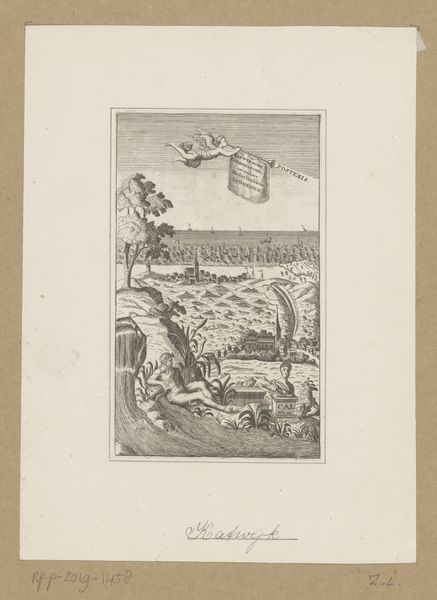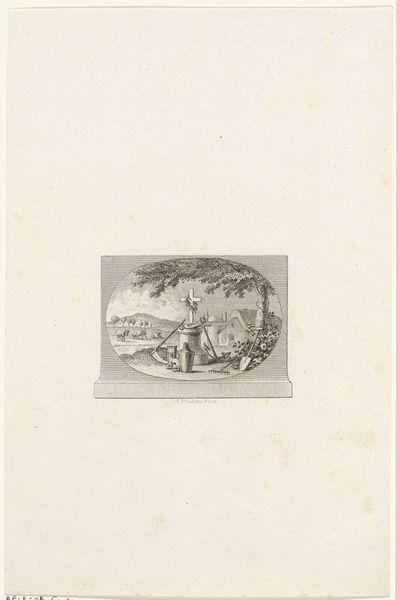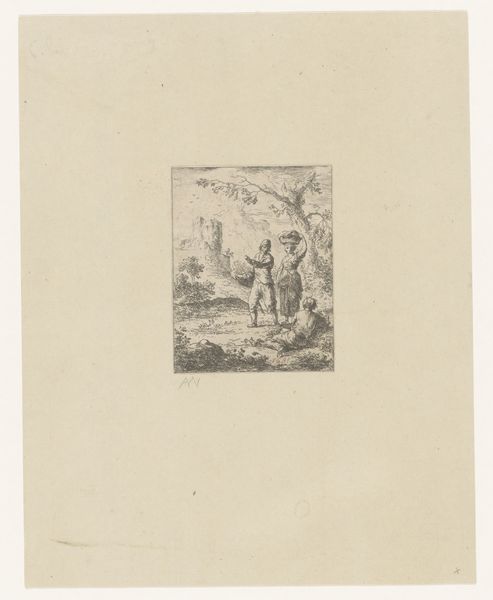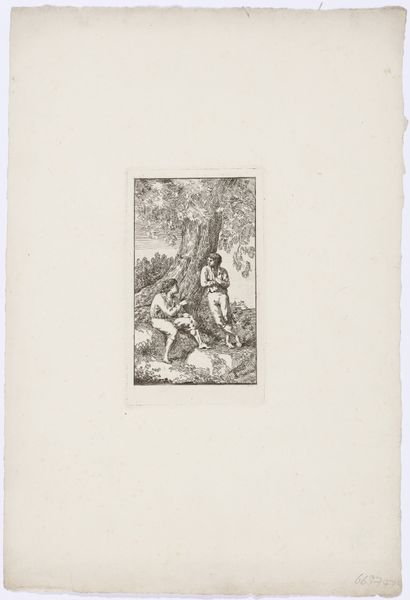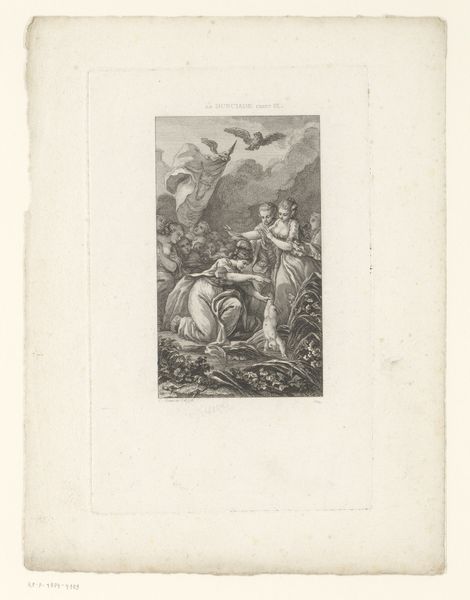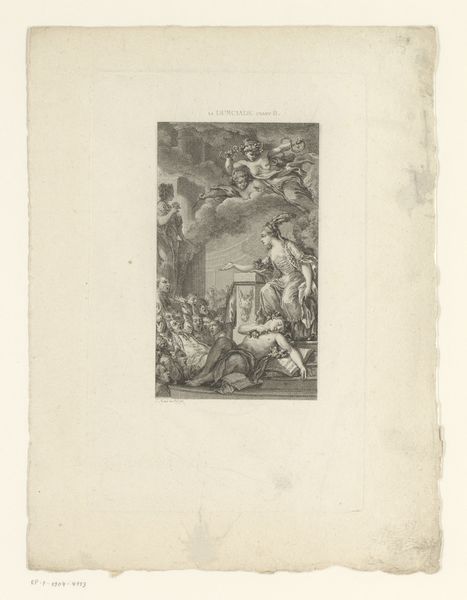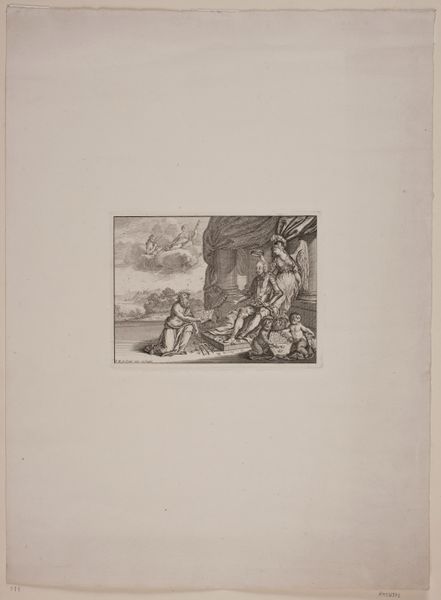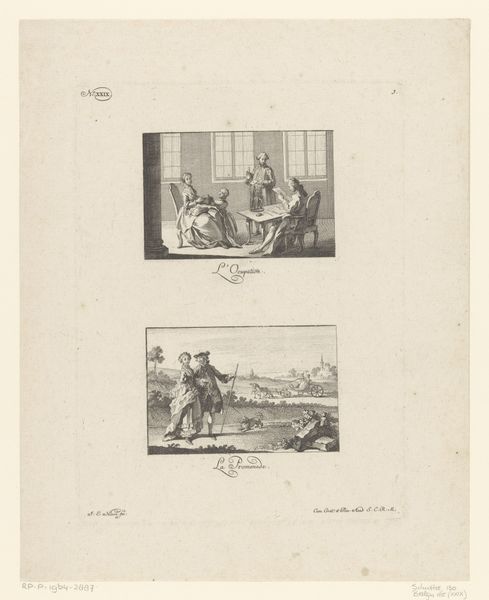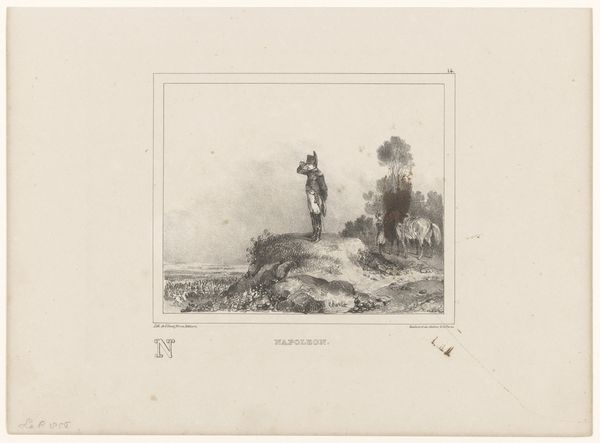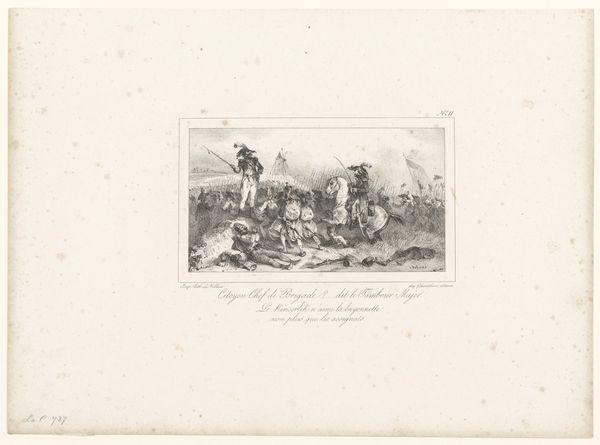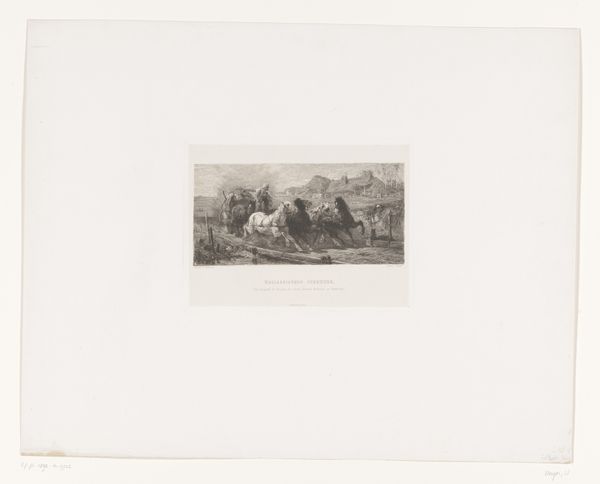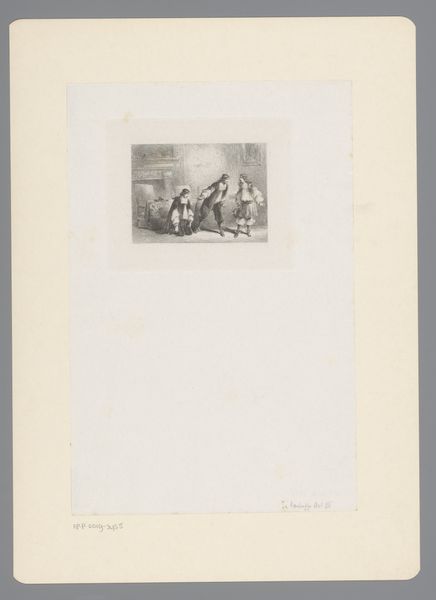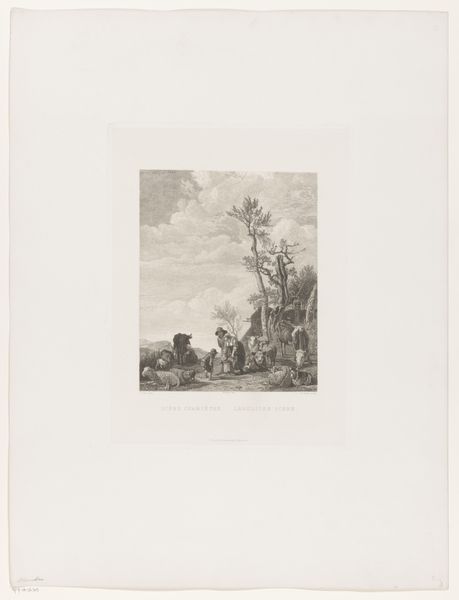
print, etching, engraving
#
baroque
# print
#
etching
#
landscape
#
cityscape
#
engraving
Dimensions: height 137 mm, width 180 mm
Copyright: Rijks Museum: Open Domain
Curator: Today, we're looking at "Gezicht op het kasteel van Argenteau," a 1651 print by Pieter Hendricksz. Schut, currently housed in the Rijksmuseum. It's a landscape etching and engraving depicting Argenteau Castle. Editor: My immediate impression is a sense of distance, a kind of removed observation. The meticulous lines convey the weight of stone but also a quiet melancholy. The details fade softly in the background, as if viewed through the veil of history. Curator: Indeed. Schut’s command of line and texture creates a very specific articulation of space. Notice how the formal rendering of the castle establishes a structural rhythm, balanced against the delicate lines in the distant hills. Editor: Absolutely, the visual structure is intriguing, but what's more interesting is the image's possible socio-political undercurrent. Castles like Argenteau weren't just residences; they were power centers. Who inhabited the space and how does the artwork reinforce a certain perception of wealth or dominance during the period of Dutch colonial expansion? Curator: That's a very pertinent question. While it does not negate a formal reading, the societal aspect adds an intriguing new dimension. Focusing on the material reality of the engraving—the etched lines themselves—they establish a visual hierarchy. We're guided to interpret the architecture through a system that, through its very order, may perpetuate ideas related to the cultural norms of the 17th Century. Editor: I concur. Thinking about accessibility to fine art prints raises questions. The image may highlight socioeconomic disparity but it's important to understand it would have mostly been distributed among elites reinforcing pre existing cultural notions. How do such historical landscape pieces affect our own perspective on inherited privilege, today? Curator: Examining Pieter Hendricksz. Schut’s print allows us to explore the nature of beauty within strict formal perimeters while also sparking awareness around historical frameworks. Thank you for bringing these aspects to light. Editor: Thanks to you, this has deepened my comprehension beyond the context in my own sphere.
Comments
No comments
Be the first to comment and join the conversation on the ultimate creative platform.
